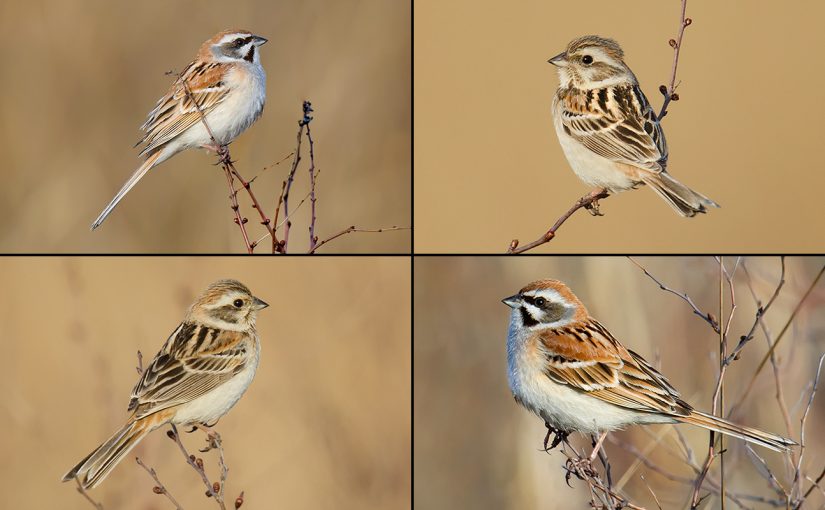by Craig Brelsford
Founder, shanghaibirding.com
“Birding Northeast China” is in two parts. This is Part 1.
Part 1: Text with Photos
Part 2: Photo Gallery
INTRODUCTION
On our first trip to Northeast China, Elaine Du and I found Jankowski’s Bunting at Saddleback Ridge in Inner Mongolia and counts of up to 600 Siberian Crane at Momoge in Jilin. Tumuji wetland yielded Red-crowned Crane and Oriental Stork as well as flocks of hundreds of geese, and at Zhalong Nature Reserve in Heilongjiang we found Swan Goose and White-naped Crane.
HIGHLIGHTS
• Finding Endangered Jankowski’s Bunting at a dramatic site called Saddleback Ridge, a remnant of pristine steppe grassland in Inner Mongolia
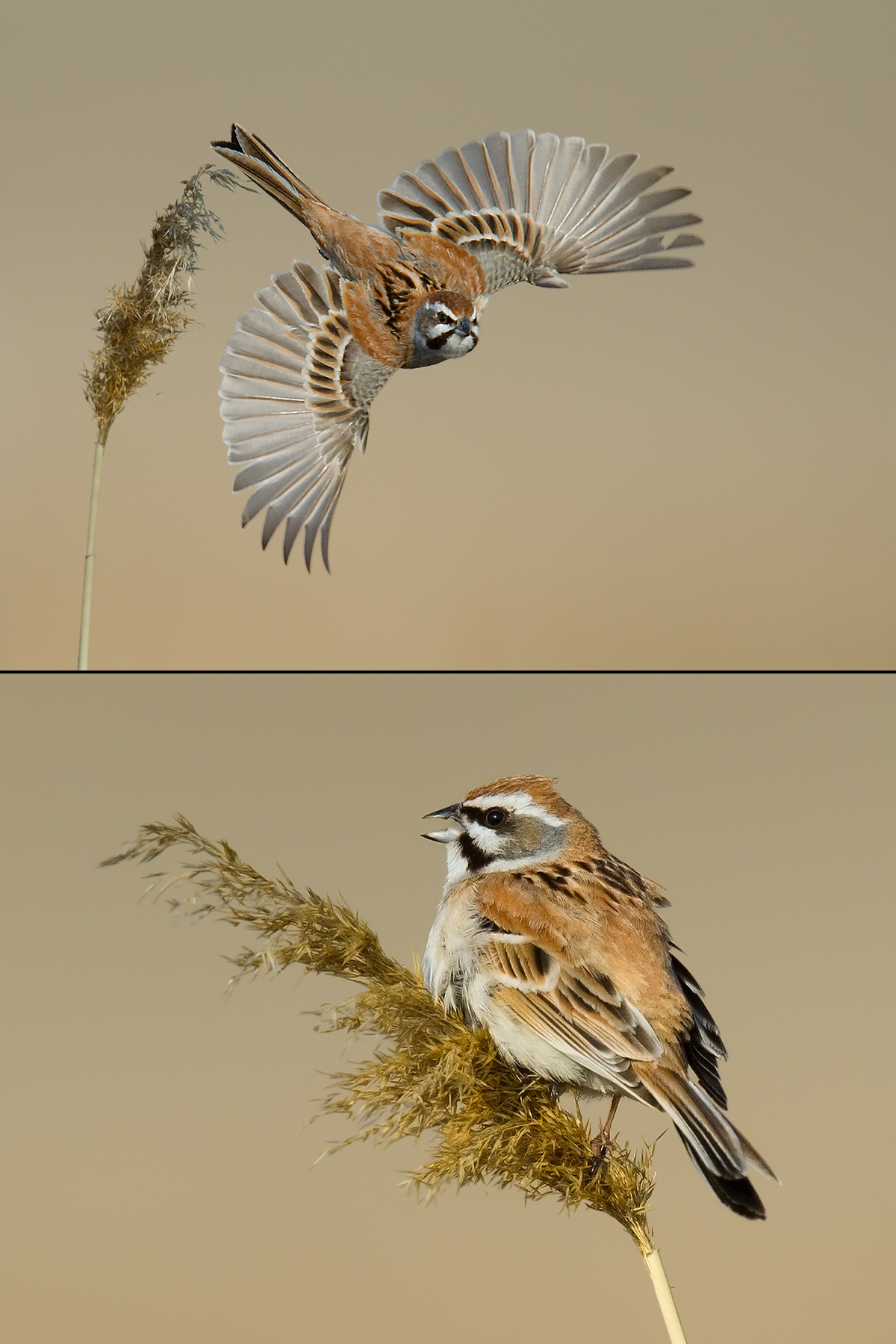
• Seeing 600 Siberian Crane at Momoge in Jilin and finding White-naped Crane and Red-crowned Crane in Inner Mongolia and Heilongjiang
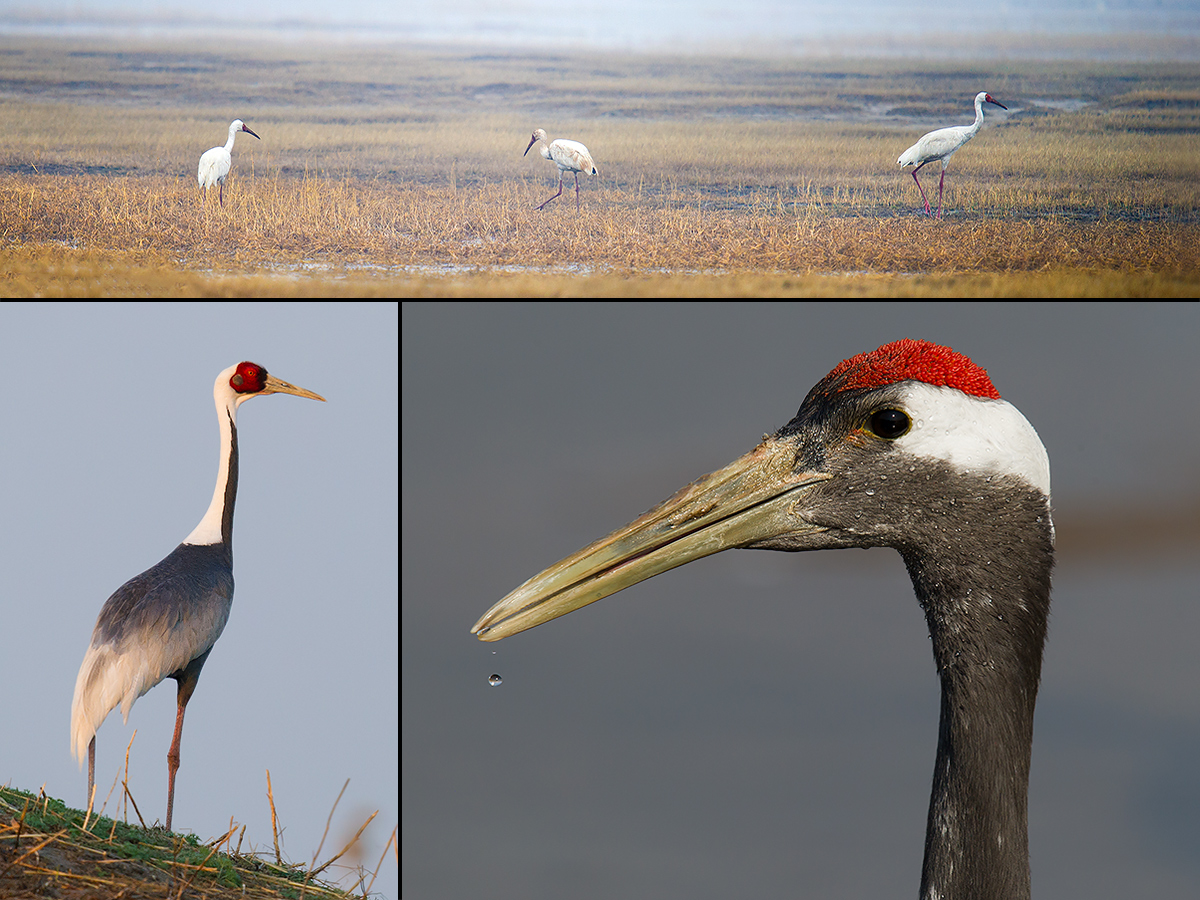
• Seeing large flocks of waterfowl at Tumuji in Inner Mongolia
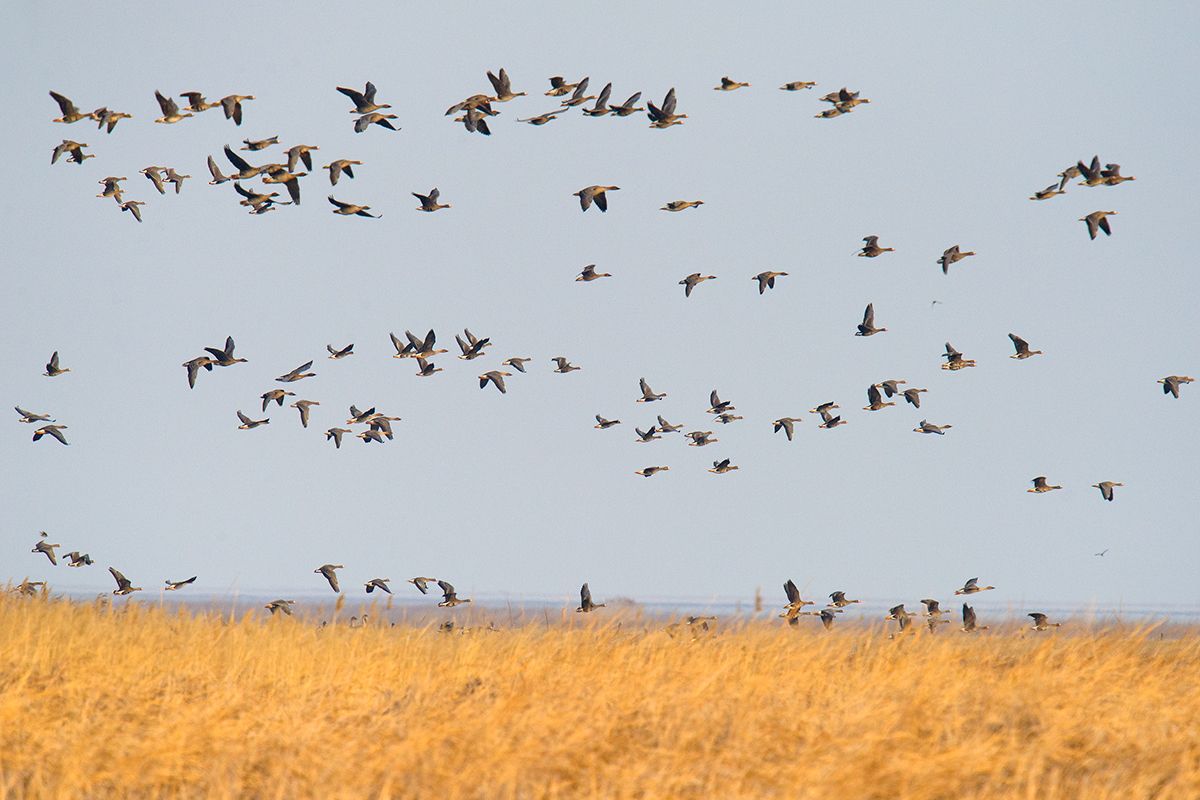
• Finding Swan Goose at Zhalong Nature Reserve in Heilongjiang
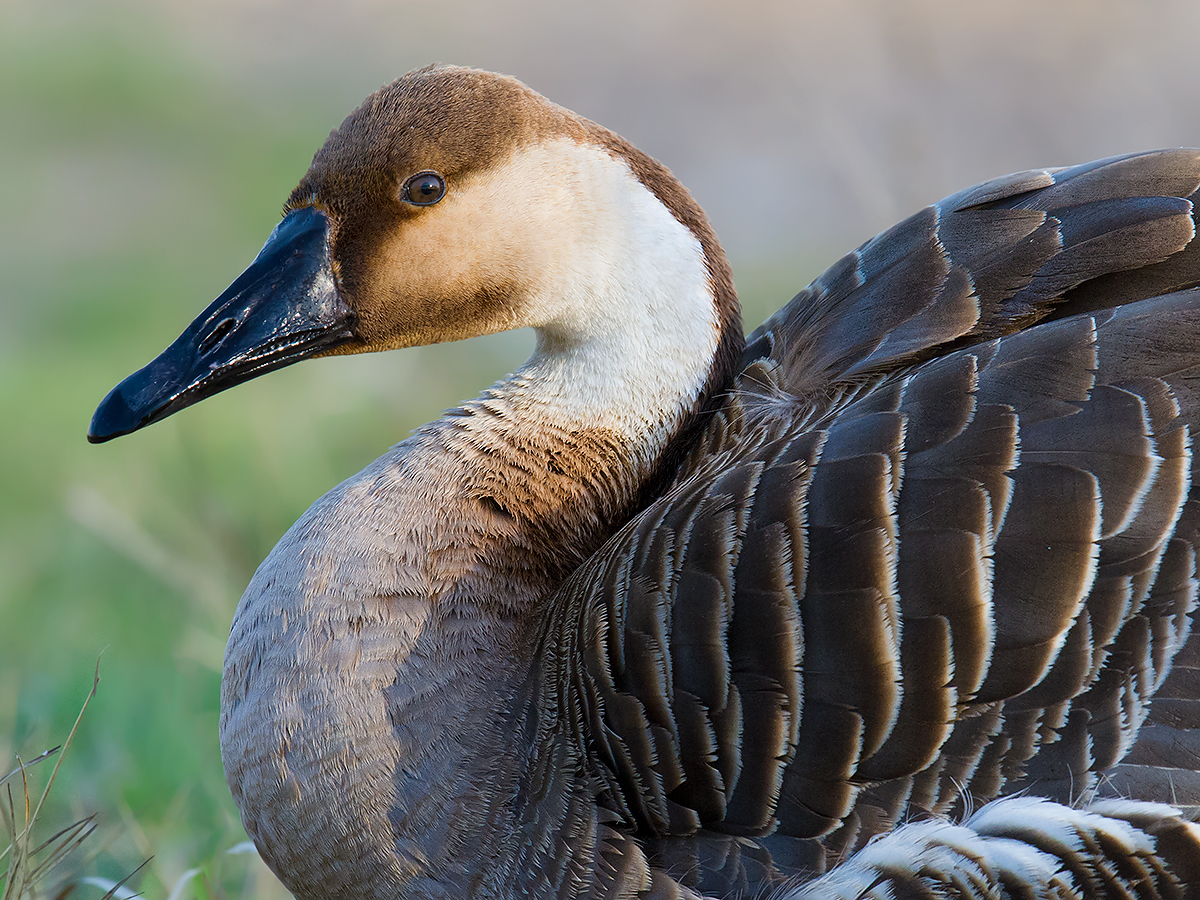
• Finding Great Bustard near Saddleback Ridge
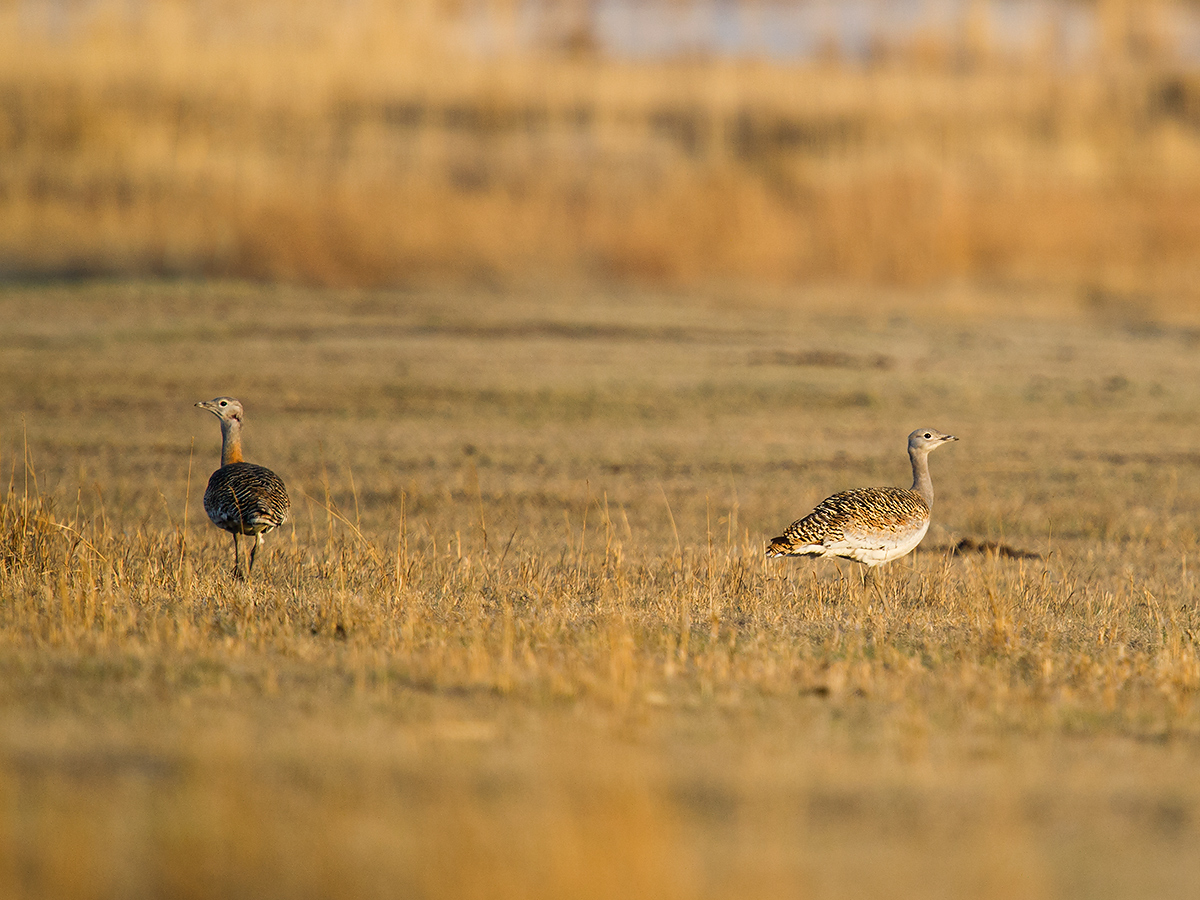
• Finding Long-eared Owl at Zhalong and watching it stare down Oriental Magpie
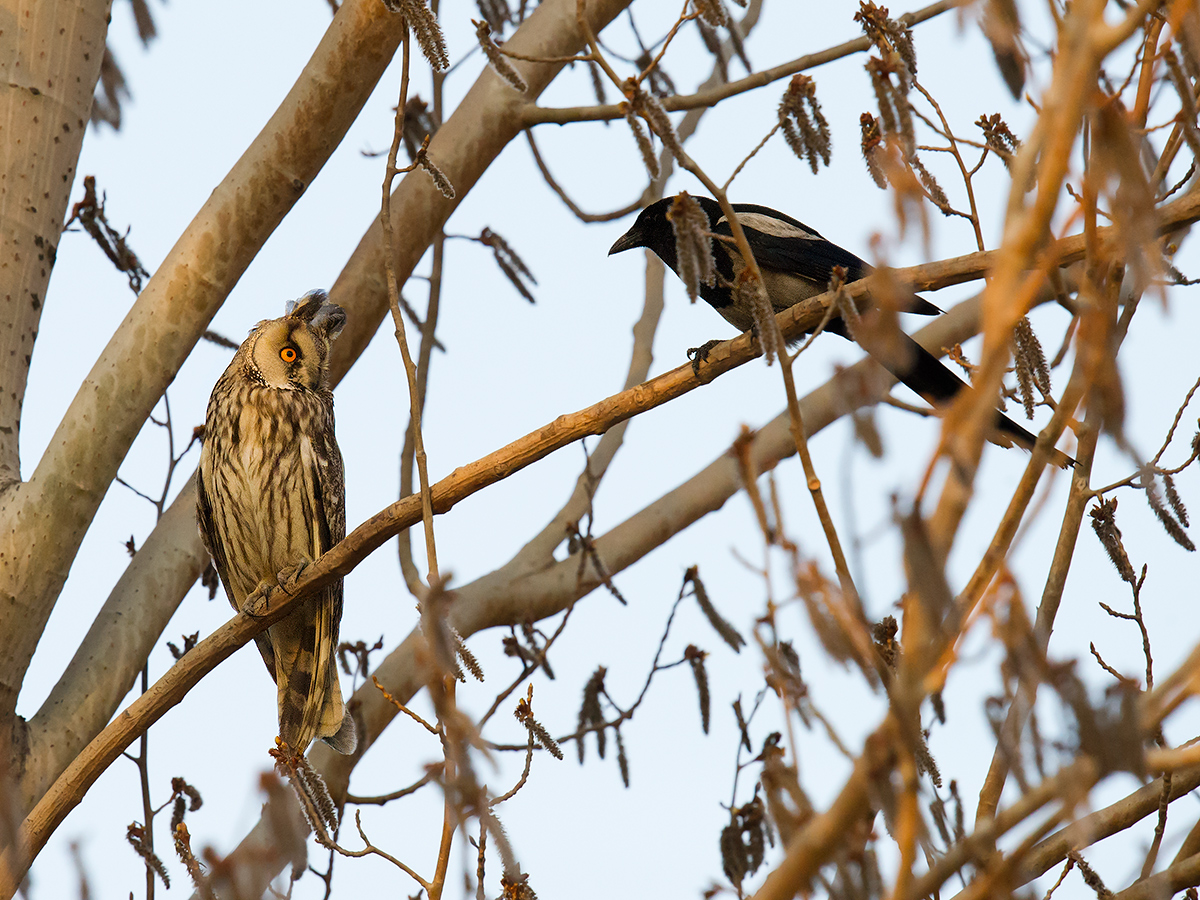
THE TRIP (all dates 2013)
Sun. 28 April
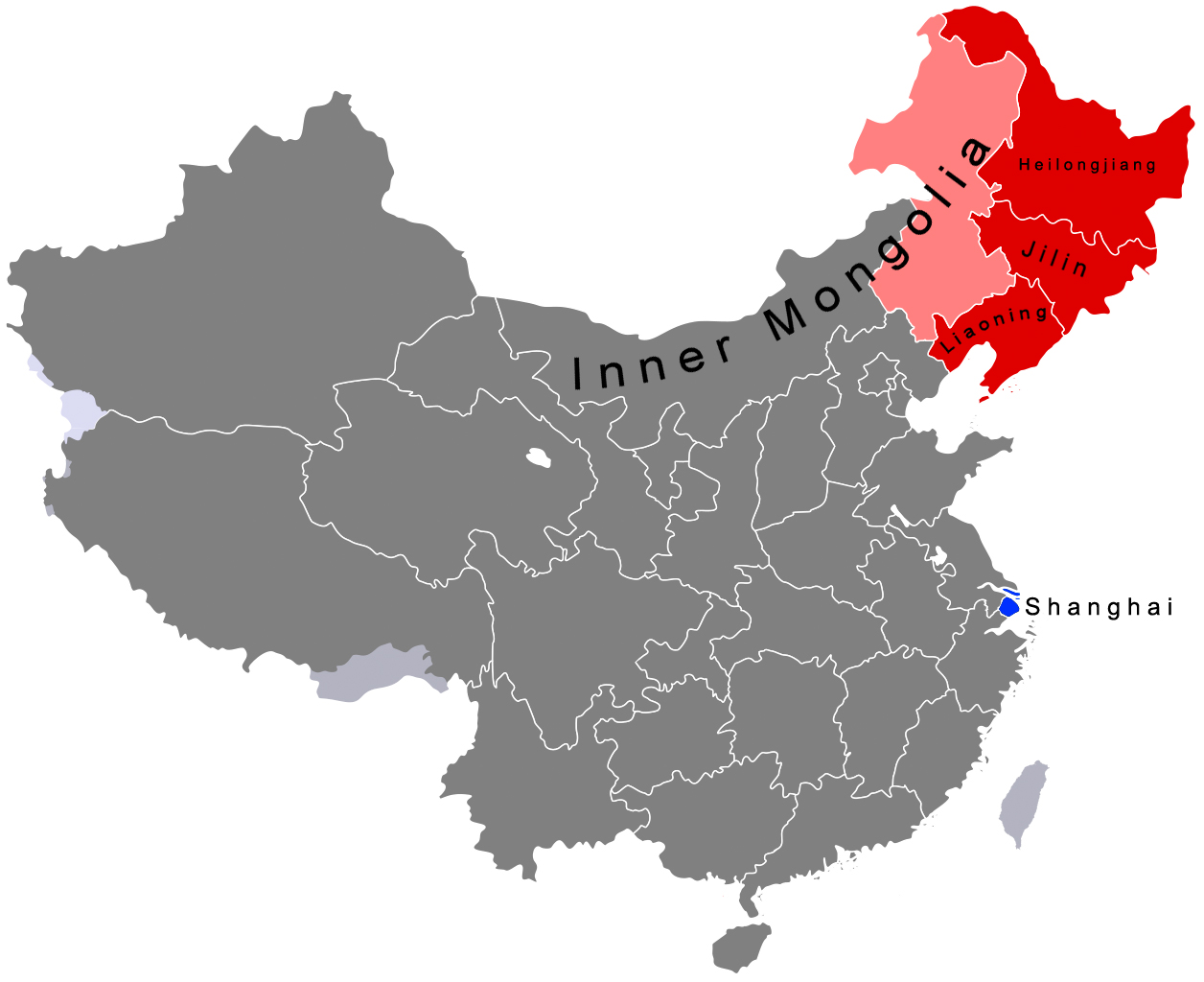
At 04:05 I awoke at my apartment in Shanghai. I took a taxi to Pudong Airport, arriving in plenty of time for my flight, scheduled for 07:10. At 10:00 Elaine Du and I arrived at Changchun (长春), capital of Jilin (吉林). We took a taxi across town to the north train station. Changchun is a giant construction zone; the unfinished subway system has torn up the ground, sending dust everywhere, and I saw many half-built buildings. It took us an hour to get to the train station. Once there, we discovered that today’s buses were sold out, and the next train departed at 17:00 and we would have to stand. We found a young man heading to Baicheng (白城), our destination. The three of us hired a private car. The first driver took us about 50 km outside town, where a second driver picked us up. This driver was supposed to take us the rest of the way to Baicheng, but near Songyuan (松原) he suddenly left the G12, illegally avoiding the toll gate. He threw the toll card through the window and took us to another spot, where we waited for yet another driver. The third driver came and we were off yet again. The third driver’s car lacked a license plate. At a toll booth, our driver blasted right through, causing the attendant to scream, “Hey, hey!” For mile after mile, farmland flanked the highway. The farmers had taken the chaff from last year’s harvest and were burning it; hundreds of little fires robbed the air of its freshness, turned the sunny sky into a grey haze, and gave me a headache. We saw few birds. Oriental Magpie Pica pica sericea were toughing it out. Finally, at 17:00, we arrived at the train station in Baicheng. Our driver, Mr. Zhang, used by Jon Hornbuckle and his party last year, was waiting for us. We drove 50 more km to Zhenlai (镇赉; 45.847435, 123.1998901). On the way, we saw a male Common Pheasant Phasianus colchicus. In Zhenlai, we saw Eurasian Tree Sparrow Passer montanus and Feral Pigeon/Rock Dove Columba livia.
Mon. 29 April
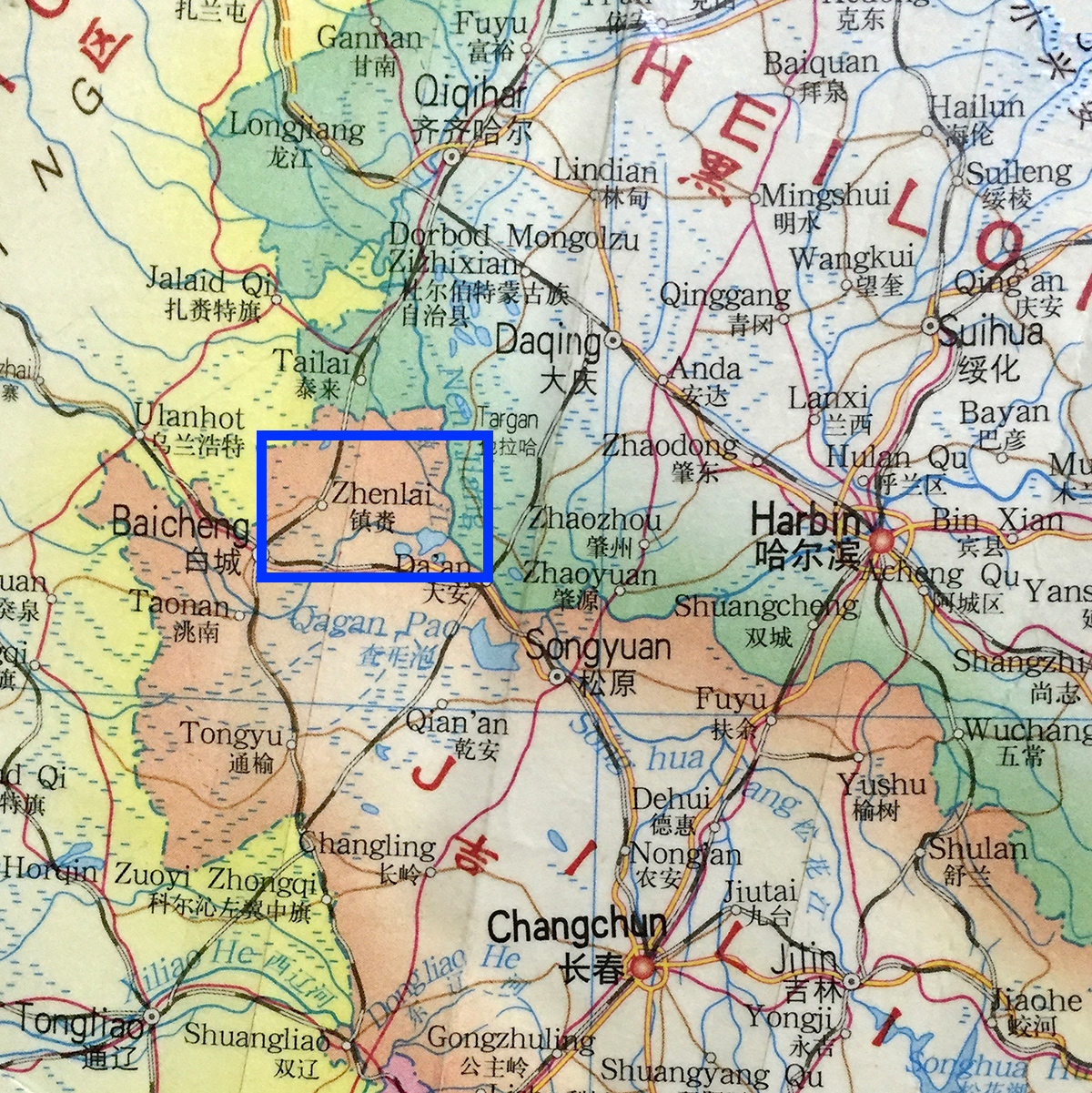
Started at 05:30. Rain. Cold (10 degrees Celsius). The trees are still bare; it feels like winter. Along the road to Momoge (莫莫格; 45.889888, 123.727560): Oriental Magpie, Daurian Jackdaw Coloeus dauuricus, and Rook Corvus frugilegus pastinator. Just outside Momoge, we found Common Pochard Aythya ferina, Great Egret Ardea alba alba, Grey-headed Lapwing Vanellus cinereus, and Amur Falcon Falco amurensis. In Momoge, peering through the rainy gloom, we saw hundreds of Siberian Crane Leucogeranus leucogeranus. Around the cranes were hundreds of geese, among them either Taiga or Tundra Bean Goose Anser serrirostris and Greater White-fronted Goose Anser albifrons albifrons. Without a spotting scope, it was difficult to pick out Baikal Teal and Lesser White-fronted Goose. The most readily seen birds were Black-winged Stilt Himantopus himantopus, Northern Lapwing Vanellus vanellus, and Black-headed Gull Chroicocephalus ridibundus. We saw a few large flocks of Black-tailed Godwit Limosa limosa melanuroides. Other birds seen in smaller numbers: Northern Shoveler Spatula clypeata, Pied Avocet Recurvirostra avosetta, Wood Sandpiper Tringa glareola, Common Snipe Gallinago gallinago gallinago, Little Grebe Tachybaptus ruficollis poggei, Eurasian Coot Fulica atra atra, Grey Heron Ardea cinerea, Carrion Crow Corvus corone orientalis. After driving the loop road at Momoge, we went back to Zhenlai for lunch. At Nanhu (南湖), a lake in Zhenlai, we found 25 Common Pochard, Eurasian Coot, Mallard Anas platyrhynchos, a pair of Gadwall Mareca strepera strepera, a single Eastern Spot-billed Duck Anas zonorhyncha, a pair of Garganey Spatula querquedula, Purple Heron Ardea purpurea manilensis, and two Great Crested Grebe Podiceps cristatus. The rain refused to let up. We quit at 13:30.
Tues. 30 April
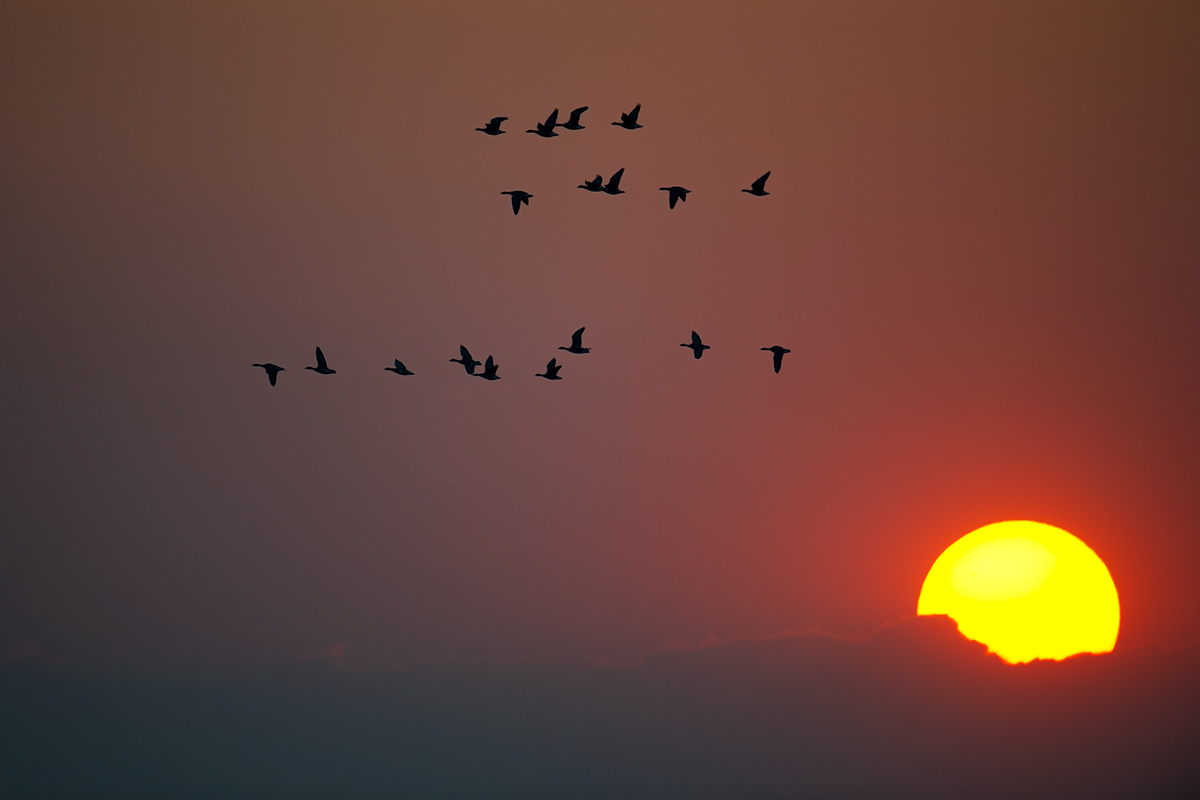
At 05:00 we set off with Mr. Zhang for Inner Mongolia and a breeding site for Jankowski’s Bunting, an area of pristine grassland habitat called Saddleback Ridge or Mǎ’ān Shān (马鞍山). On the road to Saddleback Ridge, in a small forest (46.091520, 123.008660) just on the Jilin side of the border, we saw Common Pheasant, Little Owl Athene noctua plumipes, White-cheeked Starling Spodiopsar cineraceus, Little Bunting Emberiza pusilla, and Black-faced Bunting Emberiza spodocephala sordida. The recent wet weather had made the dirt road to the Jankowski’s Bunting area impassable for Mr. Zhang’s taxi. Mr. Zhang parked at the “dry lake” (this year full of water) about 2 km from Saddleback Ridge. Flying high over the lake was a flock of 25 White-naped Crane Antigone vipio. Other birds seen at the lake: Taiga or Tundra Bean Goose, Greater White-fronted Goose, Grey Heron, Eurasian Teal Anas crecca crecca, Bewick’s Swan Cygnus columbianus bewickii (ssp. of Tundra Swan), Little Ringed Plover Charadrius dubius curonicus, Hen Harrier Circus cyaneus, Black-eared Kite Milvus migrans lineatus (ssp. of Black Kite), and Eurasian Skylark Alauda arvensis. Elaine and I walked to the buntings’ area. We noticed two grey shapes atop a distant ridge. It was a pair of Great Bustard Otis tarda dybowskii. We saw many Mongolian Lark Melanocorypha mongolica and a Eurasian Curlew Numenius arquata orientalis. We arrived at Saddleback Ridge. Immediately a pair of buntings flew onto a fence. Was seeing Jankowski’s Bunting going to be so easy? No. They were Pallas’s Reed Bunting Emberiza pallasi (small and delicate; bill shorter and with straighter culmen than the larger Common Reed Bunting [E. schoeniclus]). Elaine and I spent six hours at the area, combing it for Jankowski’s. We found none. There were three or four Black-faced Bunting. Common Pheasant were calling; we inadvertently flushed one. An Amur Falcon flew by. A flock of 15 White-naped Crane flew overhead. There was a fleeting appearance by Pied Harrier Circus melanoleucos and Oriental Pratincole Glareola maldivarum. We found a single Two-barred Warbler Phylloscopus plumbeitarsus. We saw a few Barn Swallow Hirundo rustica gutturalis. As we were walking back to the car, the sun was setting. Greater White-fronted Goose flew near the setting sun. In the lake was a single Ruddy Shelduck Tadorna ferruginea.
Wed. 1 May
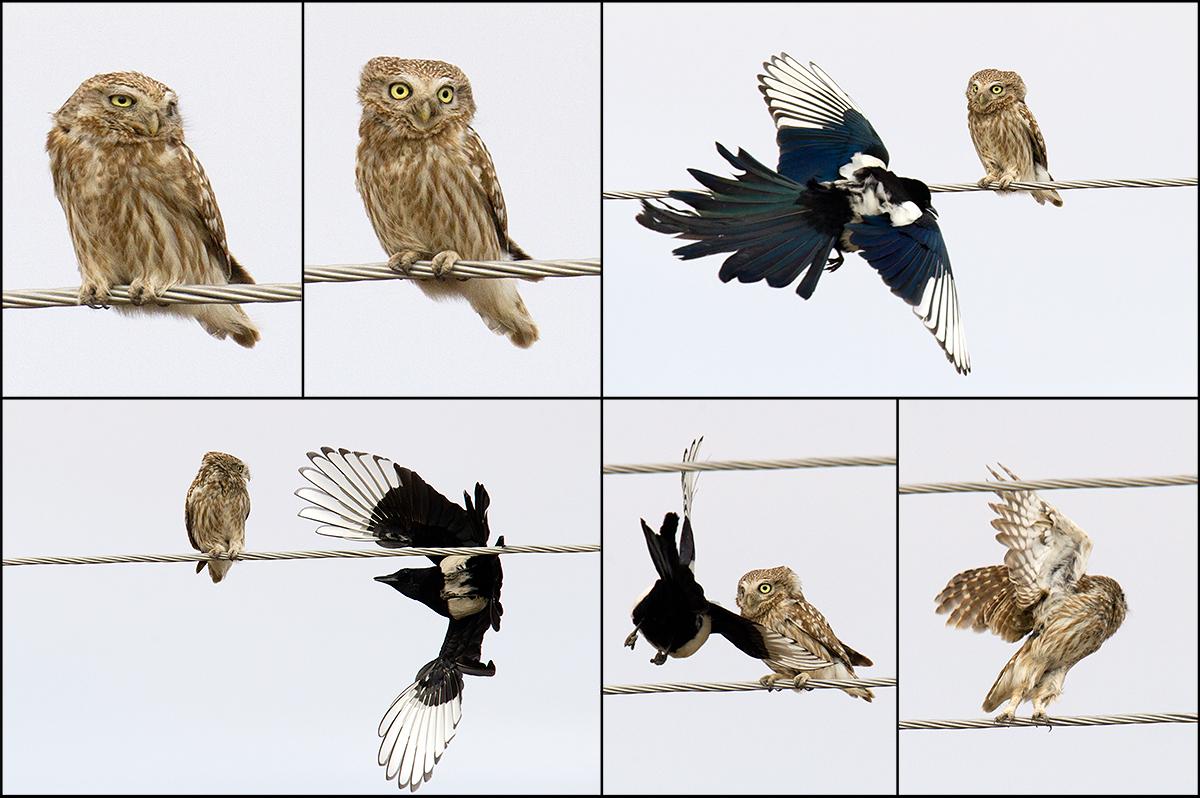
We decided that Jankowski’s Bunting hadn’t arrived yet at the core area on Saddleback Ridge. The plan therefore is to give Jankowski’s another day and return tomorrow. We drove back to Momoge. On the way in, we saw six Eurasian Spoonbill Platalea leucorodia leucorodia. From the observation platform, we counted about 600 Siberian Crane. A large flock of about 200 Black-tailed Godwit provided some excitement. I photographed a Common Snipe and a pair of Spotted Redshank Tringa erythropus. I saw a male Amur Stonechat Saxicola stejnegeri. On the way back to Zhenlai, I photographed a pair of mating rooks. After lunch in Zhenlai, we again drove into Inner Mongolia. Our destination was the wetland reserve called Tumuji (图木吉; 46.294325, 123.016158). Just after we crossed the border into Inner Mongolia, I photographed a Little Owl on a utility wire being mobbed by two magpies. Other birds along the road: Common Kestrel Falco tinnunculus, Eurasian Hoopoe Upupa epops epops. At the Tumuji wetland, near the observation tower: thousands of Greater White-fronted Goose and Taiga/Tundra Bean Goose, a single Red-crowned Crane Grus japonensis, and a single Oriental Stork Ciconia boyciana. Poignantly, the Red-crowned Crane and Oriental Stork were foraging together; I captured two endangered species in a single frame. I photographed a flock of 17 Temminck’s Stint Calidris temminckii (favors inland marshes on migration, pure white outer tail feathers). We heard the booming calls and breathy inhalations of Eurasian Bittern Botaurus stellaris. Other birds: Kentish Plover Charadrius alexandrinus, Common Redshank Tringa totanus, Gadwall, Garganey, Mallard, Northern Shoveler, Eurasian Teal, Great Egret, Grey Heron, Black-winged Stilt, Wood Sandpiper, Spotted Redshank, Northern Lapwing.
Thurs. 2 May
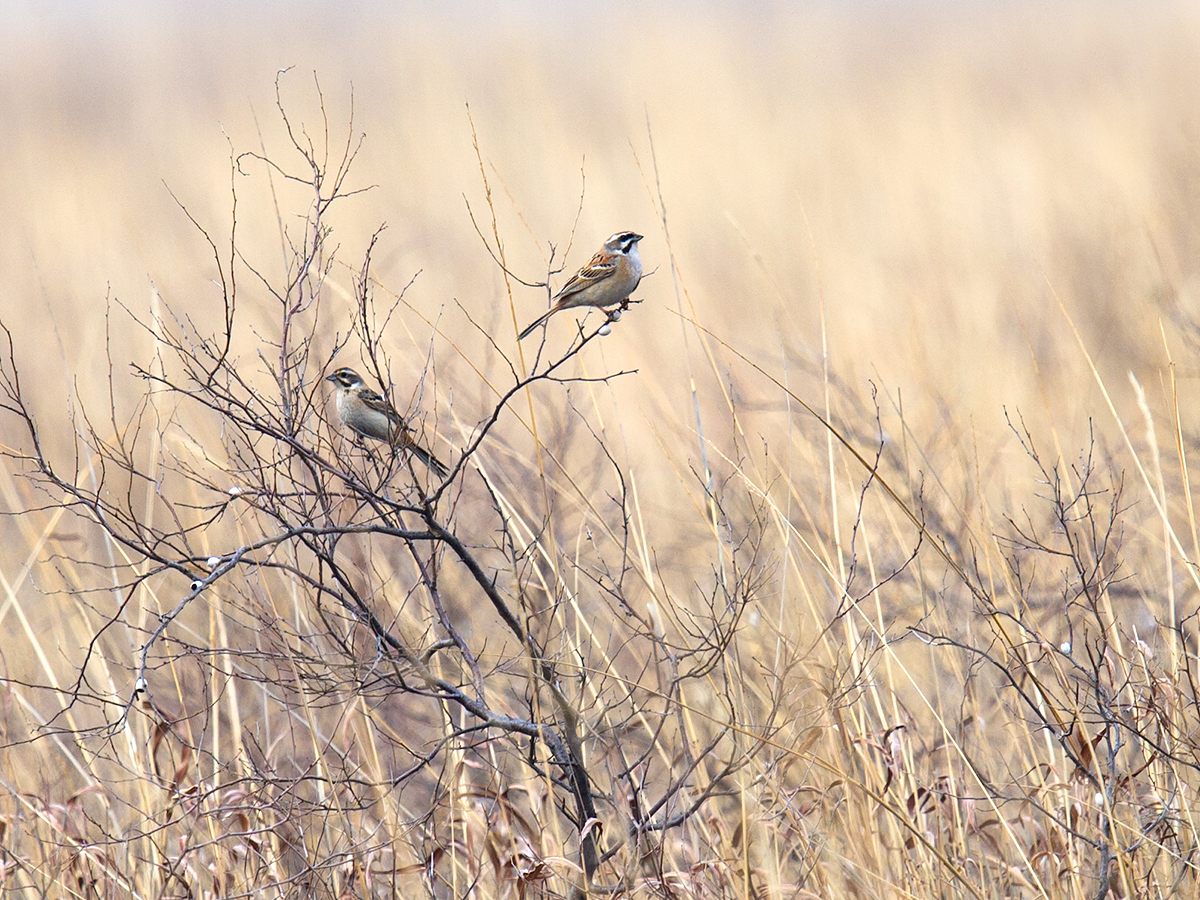
Mr. Zhang met us at 05:00. After a hearty breakfast of baozi at a local restaurant, we were on our way to Saddleback Ridge at Tumuji. On the way in, we saw a member of the grey-shrike complex, probably Chinese Grey Shrike Lanius sphenocercus sphenocercus (large, white bars on primaries and secondaries, grey rump). Because the weather has been warmer and dryer these past few days, Mr. Zhang was able to drive his taxi to the fence surrounding the Jankowski’s Buntings’ core area. Elaine and I entered at 07:00. Within minutes, I saw Jankowski’s Bunting Emberiza jankowskii. A male was on a branch of one of the tiny apricot trees. The bird was not singing. (I found no singing Jankowski’s Bunting today.) For 45 minutes, I was able to spot and photograph male and a few female Jankowski’s in the branches of the little trees. By 07:45, the buntings were keeping to the ground. I estimate that I witnessed six individuals in my three hours on Saddleback Ridge. Above the core area flew a flock of 15 White-naped Crane. Driving in we saw a single Great Bustard, and driving back we saw a single Great Bustard. We drove to the Tumuji preserve headquarters, where we met Mr. Yuè. He accompanied us on a search for Great Bustard near Saddleback Ridge. We found none. We saw a male Pied Wheatear Oenanthe pleschanka, Great Spotted Woodpecker Dendrocopos major (ssp. prob. brevirostris), two Eurasian Collared Dove Streptopelia decaocto xanthocycla, and an Asian Short-toed Lark Alaudala cheleensis. At the observation tower and nearby wetland: four Greylag Goose Anser anser rubrirostris, two Northern Pintail Anas acuta, six Eurasian Teal, seven Eurasian Spoonbill, Eurasian Curlew, and a Red-crowned Crane and an Oriental Stork, probably the same individuals as yesterday.
Fri. 3 May
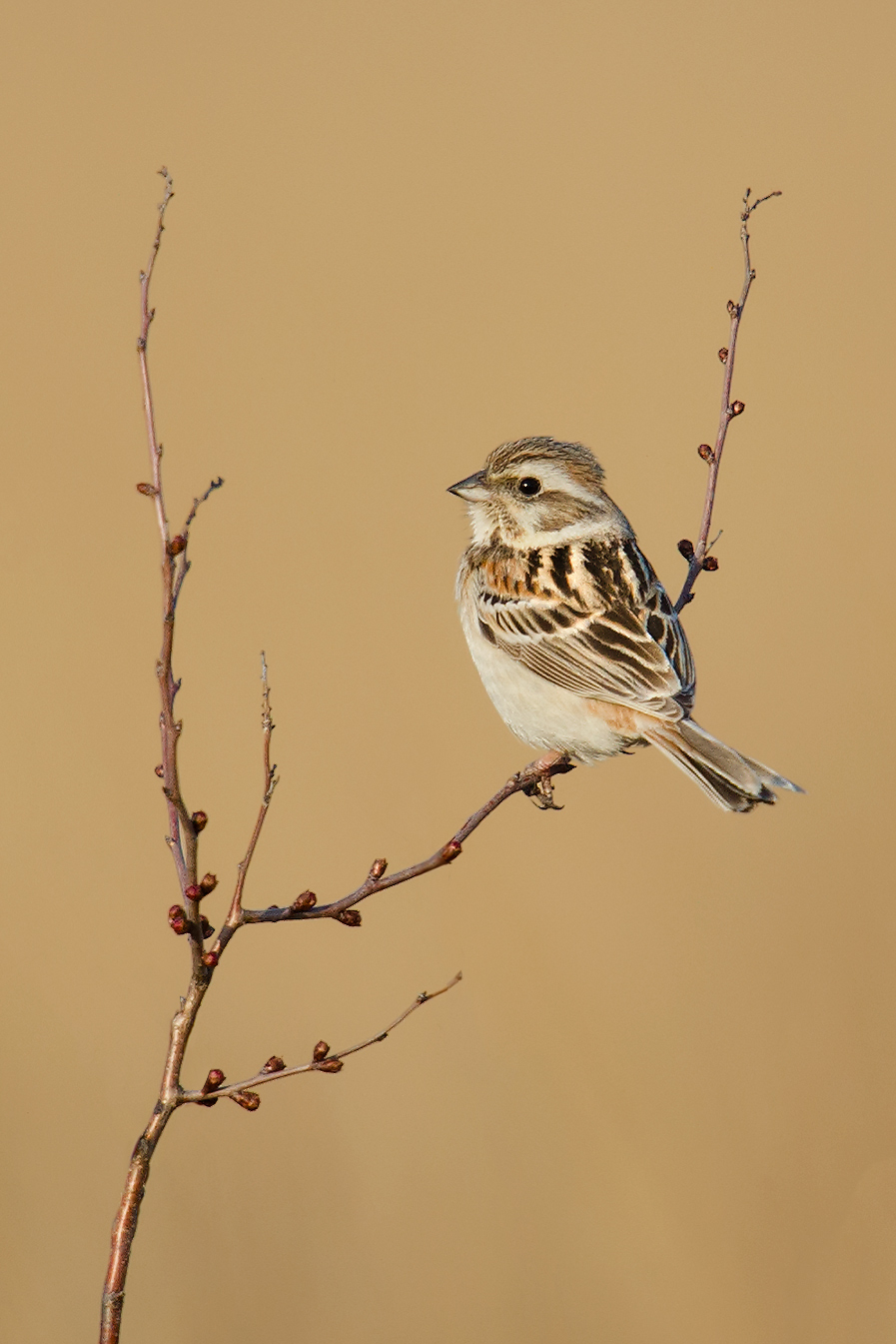
Today Mr. Zhang met us at 04:30. The sun rose at 04:40. It was a beautiful, cool morning. We drove into Inner Mongolia and Saddleback Ridge. I was unsatisfied with my images of the Jankowski’s Bunting, and I wanted another chance to shoot Great Bustard. Near the “dry lake” Elaine spotted two Great Bustard in perfect light. I quickly achieved my best images of that species. We stepped into the Jankowski’s core area at 05:45, a crucial 75 minutes earlier than yesterday. Almost immediately, we found our buntings. This time, the males were singing! In the space of three visits over four days on Saddleback Ridge, Elaine and I went from no Jankowski’s Bunting at all in the core area (Tuesday) to buntings present but not singing (Thursday) to buntings present and singing (Friday). The clean, early-morning sunshine provided perfect lighting. Because the buntings were singing today, they were lingering longer on the branches of the little apricot trees and opening their mouths dramatically to sing. A male flew atop a tall reed, threw his head back, and let loose in song. What a thrill! And what a moment for reflection. What species shows the relationship between habitat destruction and extinction better than Jankowski’s Bunting? On Saddleback Ridge, the illustration could not be clearer. Outside the fence, the original grassland has been devoured up to the very last foot; not a single Jankowski’s Bunting lives there; but in its island of suitable habitat inside the fence, Jankowski’s is a common bird. Leaving the core area, we once again found Great Bustard and Mongolian Lark. In the afternoon, I entered Heilongjiang for the first time. Mr. Zhang drove us to Zhalong Nature Reserve (扎龙国家级自然保护区; 47.208405, 124.238707). The freeway crosses part of the reserve. As we zoomed through, I saw two Red-crowned Crane and six Eurasian Spoonbill. Zhalong is going to be great, I was thinking. But the hotel in the reserve is closed for repairs. The plan had been to stay in the reserve and simply walk outside for birding. Elaine and I had to spend the night 25 km away at Qiqihar (齐齐哈尔). Along the way to Qiqihar we saw two Eurasian Bittern in the marshes. Other birds: Oriental Turtle Dove Streptopelia orientalis orientalis, numerous Common Pheasant, Amur Falcon, and White-cheeked Starling. We said goodbye to Mr. Zhang in the parking lot of the White Crane Hotel (白鹤宾馆, Bái Hè Bīnguǎn) across the street from the train station in Qiqihar.
Sat. 4 May
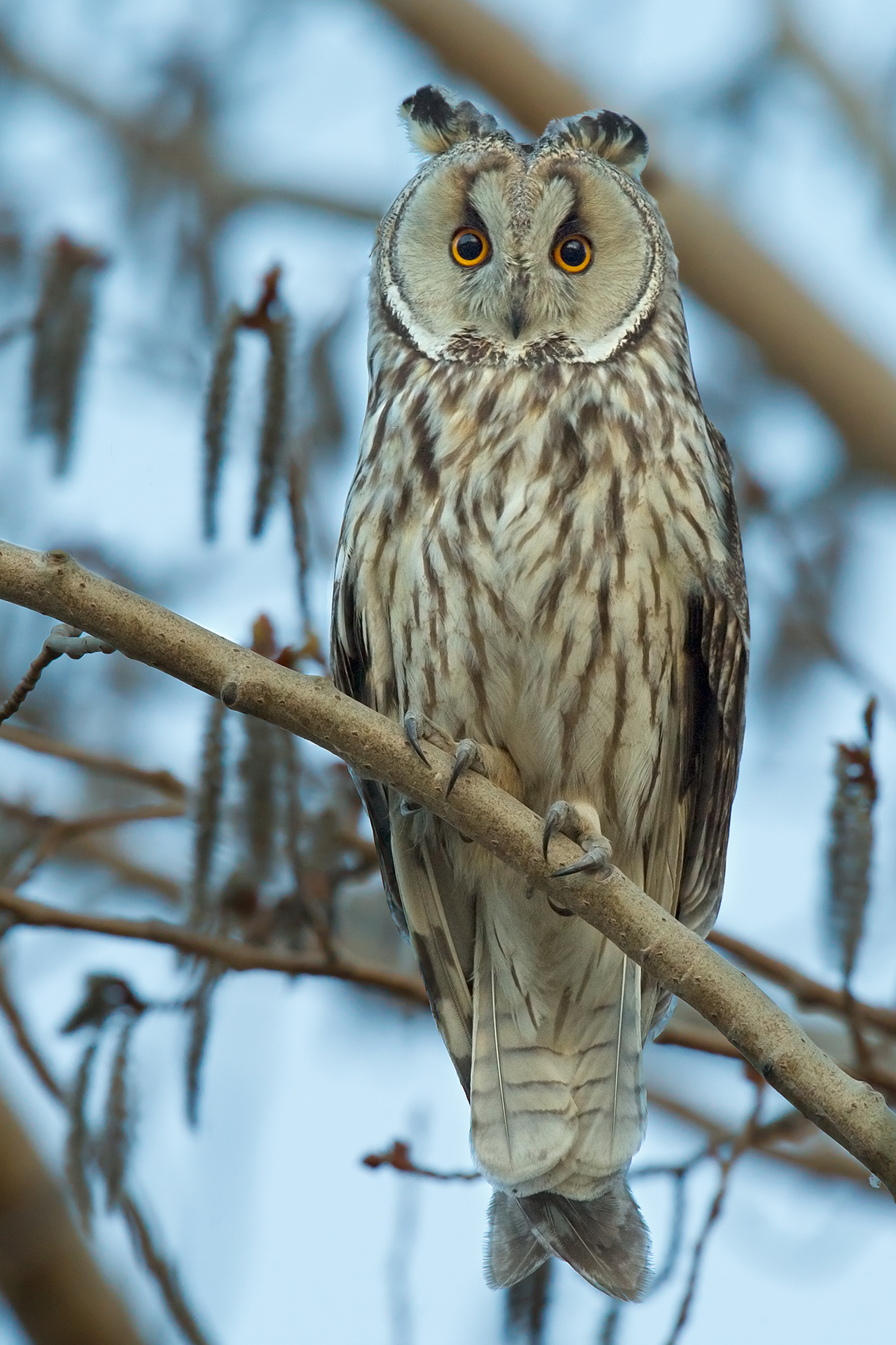
Elaine and I rented a car in Qiqihar and drove to Zhalong. The area around the hotel has many trees. We found Red-flanked Bluetail Tarsiger cyanurus, one or two Taiga Flycatcher Ficedula albicilla, Brambling Fringilla montifringilla, and four species of bunting: Little and Black-faced as well as Yellow-throated Bunting Emberiza elegans elegans and Yellow-browed Bunting Emberiza chrysophrys. We took the shuttle deeper into the preserve to watch the Red-crowned Crane show. Every day at set times the keepers show the semi-wild Red-crowned Crane to the crowd. The cranes fly, display, and bathe in front of the spectators. I asked the keepers whether the birds were injured; they said they were not. I asked them whether the cranes had been captured; they said they had. Finally, I asked them whether these tamed cranes would fly south for the winter. They said they would. The spectacle seemed something more suited to a circus than a nature reserve. We walked back toward the entrance. On the way we came across the somewhat tame Swan Goose Anser cygnoides. About 25 of the threatened birds gather around a little mound on which the keepers set food. The food atop the mound also attracted a single White-naped Crane. As Elaine and I were viewing the Swan Goose, a Red-crowned Crane flew in, probably attracted to us as a source of food. Despite my misgivings about the presence of so many tame cranes at Zhalong, the sight of the crane flying in was exciting. I stood beside the powerful bird. I was close enough to see mosquitoes biting its strong, scaly, black legs and to appreciate its substantial beak, which could easily pop a man’s eye out. We walked on. The sun was going down. An otter swam by. A pair of Great Crested Grebe were beautiful in the perfect evening light, but they performed no courtship display. Back in the wooded area near the hotel, we saw a large shape flying in. It was Long-eared Owl Asio otus otus. As soon as the owl arrived, a magpie mobbed it. The standoff continued for several minutes. Other birds: Olive-backed Pipit Anthus hodgsoni, Common Pochard, Amur Falcon, Black-headed Gull, Purple Heron, Grey Heron, Grey-headed Lapwing, and Two-barred Warbler.
Sun. 5 May
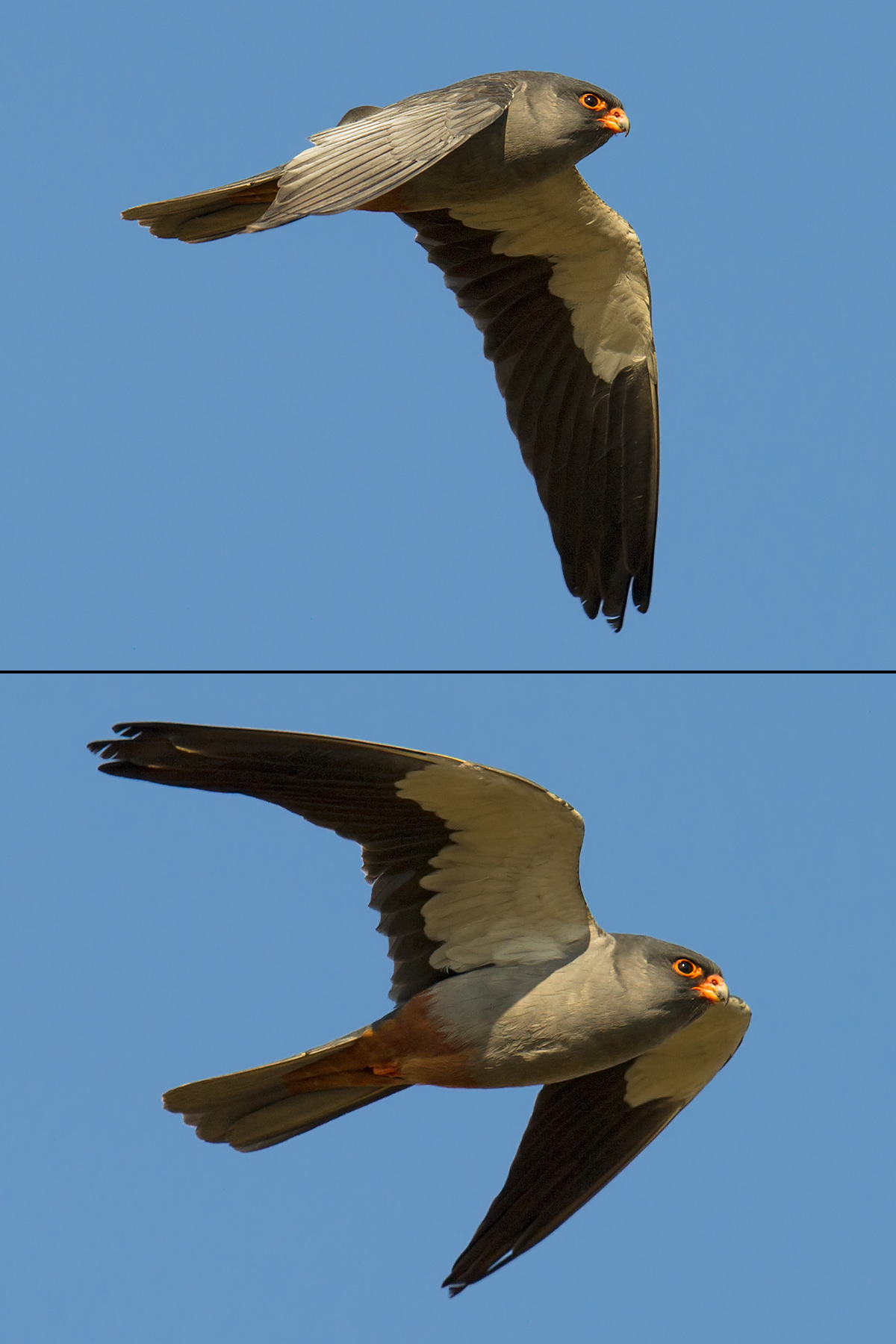
I was awake at 04:00 and at Zhalong by 05:00. I heard the unmistakable chirr of Reed Parrotbill Paradoxornis heudei polivanovi. I searched for but could not find the bird. Other birds seen for the first time at Zhalong: Siberian Accentor Prunella montanella, Dusky Thrush Turdus eunomus, Green-headed Wagtail Motacilla tschutschensis taivana (ssp. of Eastern Yellow Wagtail), Amur Wagtail Motacilla alba leucopsis (ssp. of White Wagtail), Hen Harrier, Great Spotted Woodpecker, Black-faced Bunting, Little Bunting (singing), Pallas’s Reed Bunting (female; straight culmen). Elaine and I returned to Qiqihar, dropped off the rental car, and took the bus to Harbin. My flight to Pudong Airport was delayed and finally left Harbin at 19:30. At Pudong Airport, I had to wait in line for an hour to get a taxi. As I waited, I reflected with much satisfaction on my week in Northeast China.
ACKNOWLEDGEMENTS
Thanks to Jon Hornbuckle and Dave Woodford. Jon’s account of his stay in Northeast China in 2012 gave me the blueprint for my trip, and Dave’s precise description of the Jankowski’s Bunting site led me directly there.
Featured image: Jankowski’s Bunting, Saddleback Ridge, Inner Mongolia, China. (Craig Brelsford)
Next: Photo Gallery

